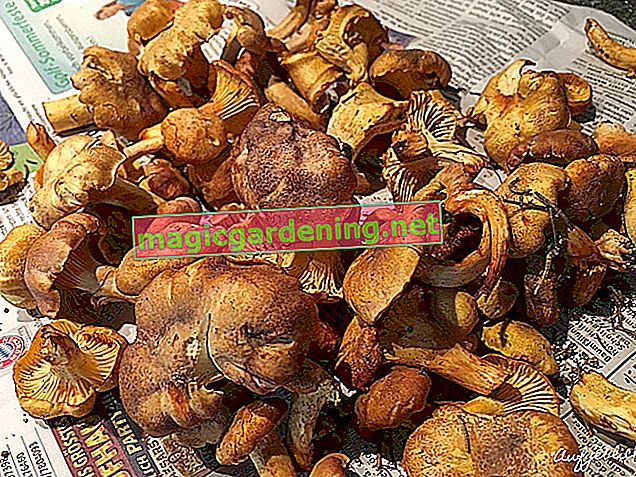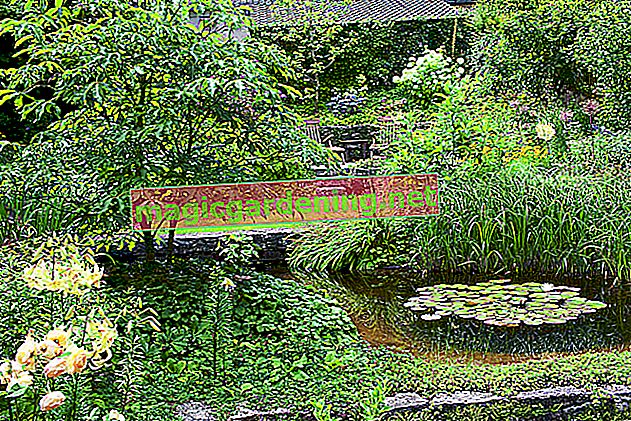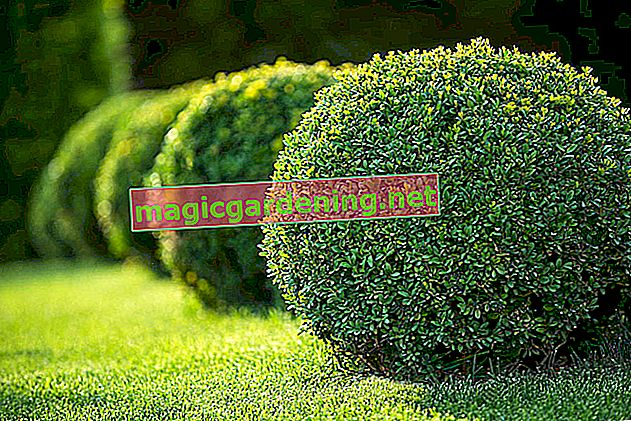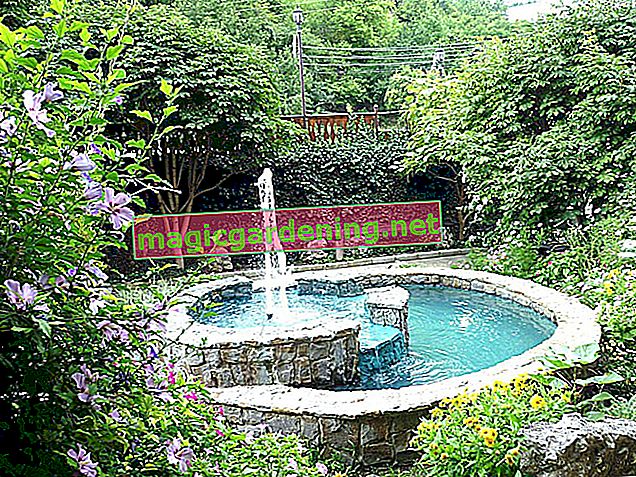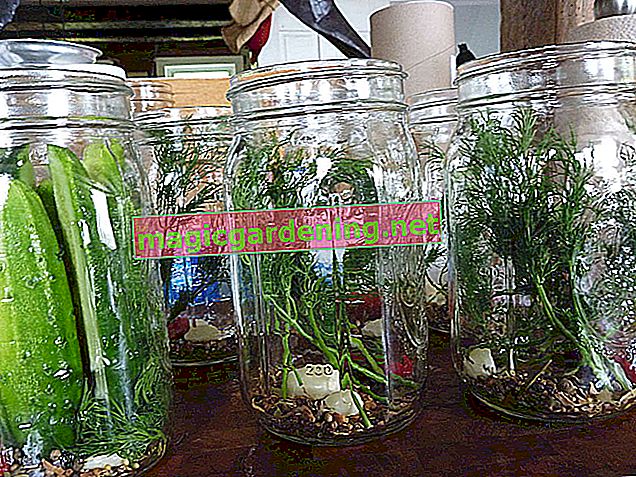
Plant hemlock correctly
Choose a partially shaded, sheltered location in the garden to plant the hemlock in autumn. Loosen the soil with a rake or tiller to remove stones, roots and weeds. Dig a planting pit with twice the volume of the root ball. Spread out a 5-10 cm thick layer of sand at the bottom as an effective drainage system against waterlogging. Enrich the excavation with acidic leaf compost and horn shavings. (€ 6.39 at Amazon *) After preparing the ground, the actual planting process is child's play:
- Pot the young tree and place it in the middle of the pit so that the balls and the ground are flush
- With a helping hand holding the log, drive a support stake next to the bale
- Now fill the planting hole with the substrate, step on it and pour soft water
also read
- Hemlock is a non-poisonous pine family
- The cut-compatible hemlock
- How to cut Canadian hemlock correctly - this is how it works
A plant cut promotes further branching. Cut off all shoots by a third. Finally, mulch the root disc with leaves or foliage soil.
Care tips
You will direct the growth of a hemlock in the right direction if you follow this maintenance program:
- Keep the soil evenly moist, without rashes towards drought stress or waterlogging
- From March to September every 3-4 weeks fertilize with acidic leaf compost or conifer fertilizer
- Extensive pruning and thinning in early spring, before fresh shoots
- Cut the hedges into shape a little again around St. John's Day (June 24th)
- Avoid cutting hemlocks into the old wood if possible
Light winter protection makes sense for young trees in the year of planting. Established hemlocks suffer from intense winter sun, so protection from reed mats is advisable. If winter comes with clear frost, water the conifer on mild days.
Continue reading
Which location is suitable?
In a shady to partially shaded location, the hemlock will not disappoint your expectations. Since it is a shallow root, the tree is threatened by windthrow at a young age. Thus, a sheltered location is ideal. Conifers are completely happy when they find fresh, moist, loamy, sandy, slightly acidic and lime-poor soil.
What soil does the plant need?
Since the hemlock reacts sensitively to drought and lime, the most important criteria for the soil condition are lashed down. A humus, deep and freshly moist soil elicits its optimum from the majestic tree. In the best case scenario, the soil has a slightly acidic pH value of 5.5 to 6.8, as you know it from native firs.
Cut the hemlock correctly
Cut a solitaire back at least once a year so that the sun can reach all regions of the crown. A frost-free day in January / February is ideal. However, do not cut into the old wood, as the conifer will find it difficult to sprout from it. If the hemlock has developed more than one base shoot, cut off the weaker specimens close to the ground.
Cultivated as a hedge, cut the hemlock in early spring and again around St. John's Day. While the winter pruning can be more extensive, in the summer limit yourself to the nosy green shoots to maintain a neat appearance. A trapezoidal shape with a broad base that tapers towards the top is advantageous. This form makes an important contribution to the prevention of aging from within.
Continue reading
Water the hemlock
The key to successful maintenance is the continuous water supply all year round. If a hemlock is exposed to drought stress, it simply throws off its needles. In this way, it also reacts to waterlogging. So check the moisture content of the soil with a thumb test so that you can water with soft water if the surface is dry.
Fertilize hemlock properly
A balanced supply of nutrients sets the course for a long tree life. Fertilize the hemlock every 3-4 weeks during the growing season with acidic deciduous or coniferous compost, supplemented with horn shavings. Alternatively, you can use a conifer fertilizer, which must be dosed according to the manufacturer's instructions. It is important to note that there is sufficient watering after each fertilization.
Overwinter
The hemlock is well hardy, so no measures need to be taken before the first frost. Young trees in the planting year are an exception, as the winter hardiness is not yet fully developed. Adult hemlocks suffer from intense winter sun and freezing. How to properly overwinter ornamental trees:
- In the year of planting, pile up the root disc thickly with autumn leaves, fixed with needles
- In the first winter, put on a breathable fleece hood
- Protect adult hemlocks from the blazing winter sun with reed mats
With dry winter weather, freezing frost and plenty of sun, the fir tree suffers from drought stress within a short time. Therefore, pour soft water on mild days.
Propagate hemlock
As is typical for conifers, reproduction is slow and represents a horticultural challenge that can drag on for years. The seeds are cold germs that are subject to stratification. To do this, place the seeds in a bag with moist sand for 6-8 weeks in the vegetable compartment of the refrigerator or place the seed pot on the wintry balcony. Then sow the seeds and keep the substrate constantly moist in the partially shaded, protected location. On average, after 4 years you will have a vital young plant in your hands that can be planted out.
How do I transplant properly?
A hemlock can be replanted without any problems in the first 5 years of life. In spring or autumn, tackle the work by pricking the roots all around with a spade. The radius should be two thirds of the current height. Lift the root ball out of the ground so that as much soil as possible sticks to it. The main premises for successful rooting in a new place are maintaining the previous planting depth and an adequate water supply.
Is hemlock poisonous?
Don't let hemlock's middle name confuse you. In fact, the hemlock is one of the few pine trees that does not contain any toxic substances. Therefore, the wood is recommended as an ideal house tree for the family garden.
Continue reading

